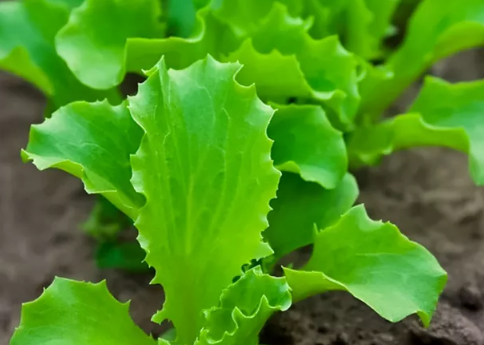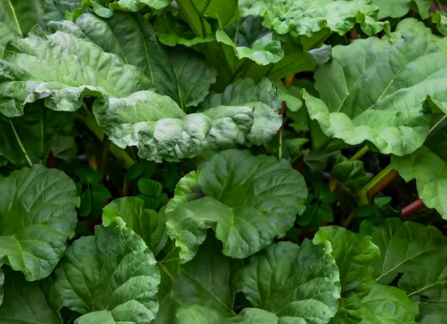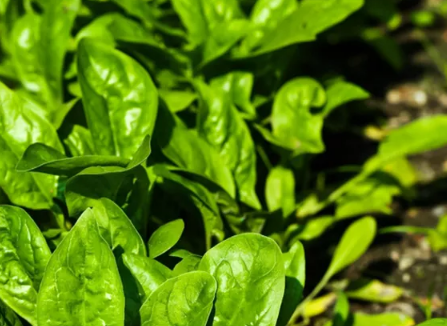In early spring, the temperature may seem too cold and the ground may be too wet for many vegetables, but there are a few hardy plants that can penetrate deep into the ground. Plus, there are fewer insects and diseases in early spring, so your vegetables should get off to a good start. Take a look at six vegetables that can be grown before the last frost date has passed.

Asparagus (Asparagus officinalis)
See the first pencil-sized tender asparagus poking its head out of the garden, like a spring ritual. When the soil temperature reaches about 50 degrees Fahrenheit, you’ll usually see the first buds. Asparagus is a perennial vegetable. Essentially, you can plant once and harvest for many years to come. You do have to make room for them, but you can expect excellent yields every year for up to 15 years or more. The ripe asparagus harvest can last for months. Plant a one-year-old canopy 4 – 6 weeks before the date of the last frost. You can also plant seeds, but the seedlings will take an extra year to grow.

- USDA Growing Areas: 3 to 10
- Sun exposure: Plenty of sunlight
- Soil requirements: sandy, loamy
Lettuce (Lactuca sativa)
The cool, wet weather of spring is the best time to grow lettuce, which comes in hundreds of varieties. Roma lettuce and butterhead are the most hardy varieties. You will get the earliest and longest harvest from the post-harvest variety. Although high temperatures, drought stress, and long hours of sunshine can cause lettuce to moss, you may have time to plant two or three lettuce plants in a row. Plant a new crop every two to three weeks. Choose slow bolt varieties or varieties with different ripening rates for continuous harvesting.
To protect the lettuce in case the frost comes, cover the garden with sheets, towels, or insulated blankets provided by any garden center. These mulches will help in the short term, but if the frost lasts for several days, you may lose your crops.

- USDA Growing Areas: 2 to 11
- Sun exposure: Full to partial shade
- Soil requirements: fertile, improved soil
Peas (Pisum sativum)
There is a tradition of planting the first peas on St. Patrick’s Day, although some Americans may not be able to participate in this tradition because their vegetable gardens are covered in snow. Even if you don’t get there early, the peas planted in late April will quickly catch up with the peas planted in March. Peas don’t like freezing temperatures, and even less like high temperatures. Choose your favorite peas – hulled peas, snow peas, or sweet peas – and start planting. Use lattices to support the vines and make harvesting easier. You can do additional planting in early May or plant varieties of different maturities to extend the harvest. Don’t miss the window of opportunity.

- USDA growing area: 2 to 11, depending on variety
- Sun exposure: Partially shaded
- Soil requirements: vary by species
Rhubarb (Rheum rhabarbarum)
Rhubarb is a vegetable that can be prepared like a fruit – think rhubarb pie – and it’s the first sweet “fruit” of the season. Growth is effortless. Once you’ve made your bed, you can look forward to a rhubarb harvest every spring for decades. Plant dormant canopies in early spring. Remove the peduncle in the first year and allow the plant to grow. Harvesting can begin in the second year after the plant is established. Every five years or so, you should dig out the root balls and separate them. Splitting is best done in early spring, when the soil is warm enough for splitting, before shoots appear. This division gives new life to the plant.

- USDA Growing Areas: 3 to 8
- Sun exposure: Full sun to partial shade
- Soil requirements: Fertile improved soil
Spinach (Spinacia oleracea)
Spinach must be grown in cool weather, otherwise it will sprout quickly. Some varieties claim to be resistant to moss, but sooner or later (and often faster) they will all set seeds. Spinach grows extremely fast and doesn’t have to wait long to enjoy. To prolong the harvest, you can plant new spinach directly into the soil every week or two until the average last frost date. For later planting, use varieties that are slow to moss. Keeping the plants well watered will help slow down the rate of mossing. Another benefit of spinach is that it can grow in the shade of the crop, and when the spinach starts to fade, the crop grows.

- USDA Growing Areas: 2 to 11
- Sun exposure: Full to partial shade
- Soil requirements: Well-drained, fertile soil with a neutral pH
Beets (Beta vulgaris)
In growing zones 3 to 7, you can plant beet seeds about a month before the last frost in spring. Beets are semi-hardy vegetables, which means they can experience repeated mild frosts in the range of 30 to 32 degrees Fahrenheit. Beets grown from seeds take about 7 to 10 weeks to mature, but you can start raising seedlings indoors or harvest some seedlings planted directly in your garden for consumption while the roots continue to grow underground. Beets prefer plenty of sunlight and constant moisture. Avoid crowding of plants to promote air circulation.

- USDA Growing Areas: 2 to 11
- Sun exposure: Full sun to partial shade
- Soil requirements: light, sandy loam, well drained